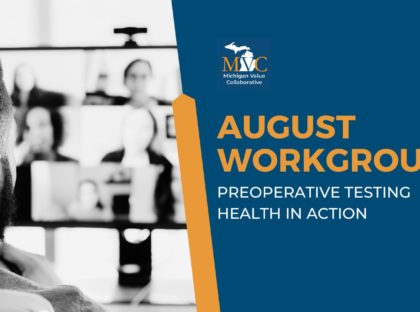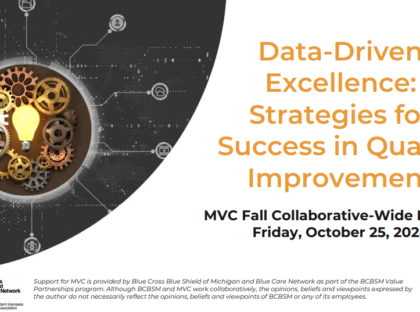October brings celebrations of Fall – with pumpkins, trips to the orchard for apple picking, and Halloween - and also Healthcare Quality Week (October 16 – 22), a time for healthcare teams to highlight their efforts to improve the quality of care for patients and families.
Over the years, various improvement methodologies have been applied in healthcare settings to advance the quality of care, reduce costs, and improve patient outcomes. Here is a look at some of the models and how they could bring value to your organization.
Six Sigma uses statistics and data analysis to reduce errors and improve processes. Originally developed in the 1980s, Six Sigma has grown over the years into an industry standard, with training and certification programs too. The Six Sigma methodology leverages the DMAIC (Define, Measure, Analyze, Improve, Control) approach (Figure 1). Following the five steps of DMAIC provides teams with a framework for identifying, addressing, and improving processes.
Lean, a methodology borrowed from the automobile industry, optimizes an organization’s people, resources, and effort to create value for customers (Figure 2). Lean’s focus is on sustaining improved levels of quality, safety, satisfaction, and morale through a consistent management system. With a goal to promote, evaluate, and implement ongoing process improvements, Lean uses Value Stream Mapping (VSM) to create a visual map of each step in a workflow, allowing teams to identify opportunities for efficiency.
Additionally, Lean encourages teams to focus on continuous improvement through the Plan Do Check Act (PDCA) model, an interactive form of problem-solving used to improve processes and implement change. In a PDCA cycle, teams work through four key steps: 1) identify the problem and create a solution plan (Plan), 2) implement a small-scale test (Do), 3) review the test performance (Check), and 4) decide to adjust or implement the test on a larger scale or adjust (Act/Adjust).
Total Quality Management (TQM) is a management approach for long-term success through customer satisfaction. Originally used by the Naval Air System Command, TQM is based on the principles of behavioral sciences; qualitative and quantitative analysis; economic theories, and process analysis. Using the TQM methodology allows organizations to be customer-focused, with all employees participating and engaging in continual improvement. By utilizing strategy, data, and effective communication, TQM becomes integrated into the organizational culture and activities (Figure 4).
With a goal to optimize activities that generate value and reduce waste, the Kaizen approach is based on the belief that continuous, incremental improvement adds up to substantial change over time (Figure 5).
The MVC Coordinating Center supports hospital and physician organization members across the state in identifying opportunities for improvement and facilitating a collaborative learning environment for members to exchange best practices. If you are interested in discussing improvement opportunities for your site, please contact the MVC Coordinating Center at michiganvaluecollaborative@gmail.com.



